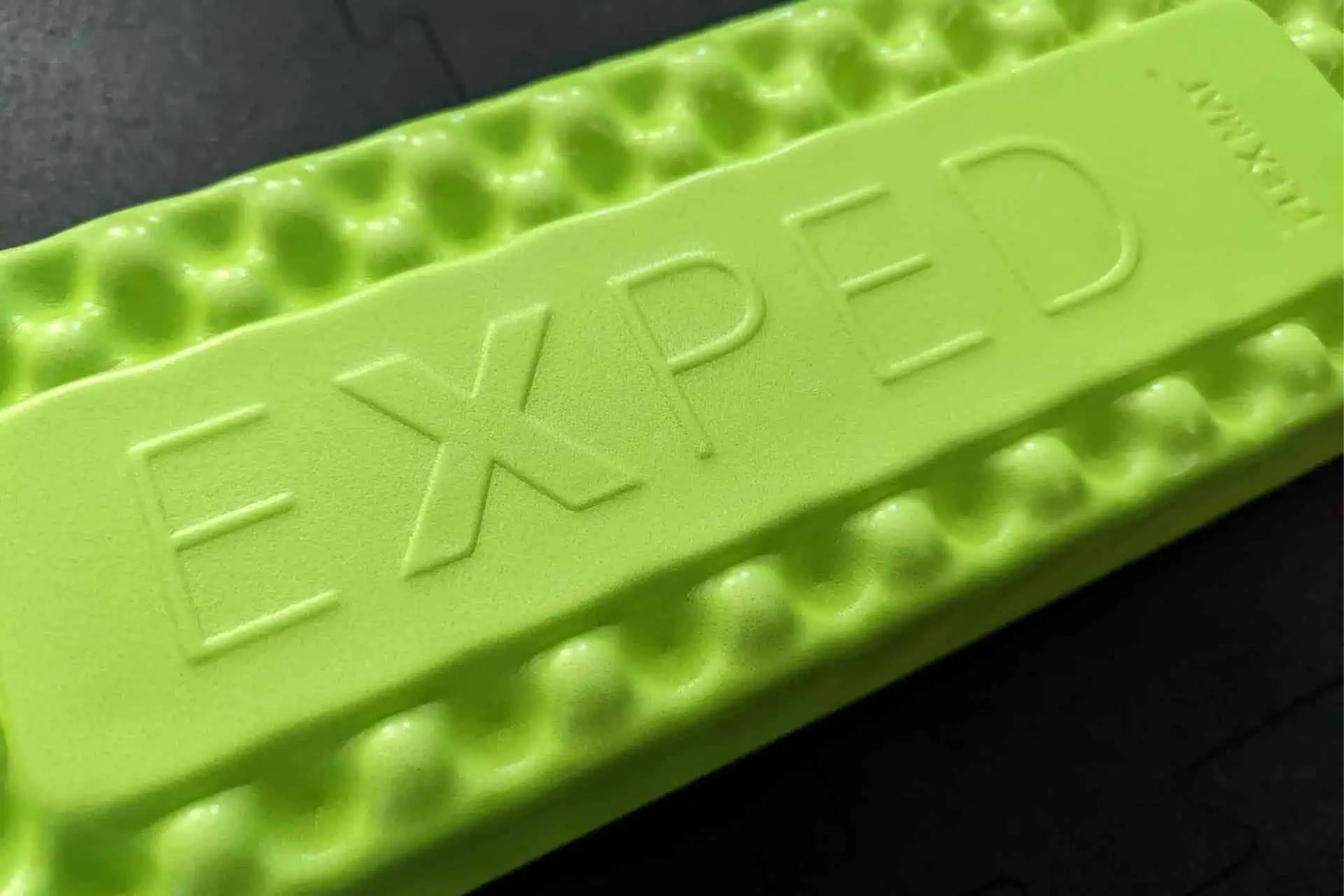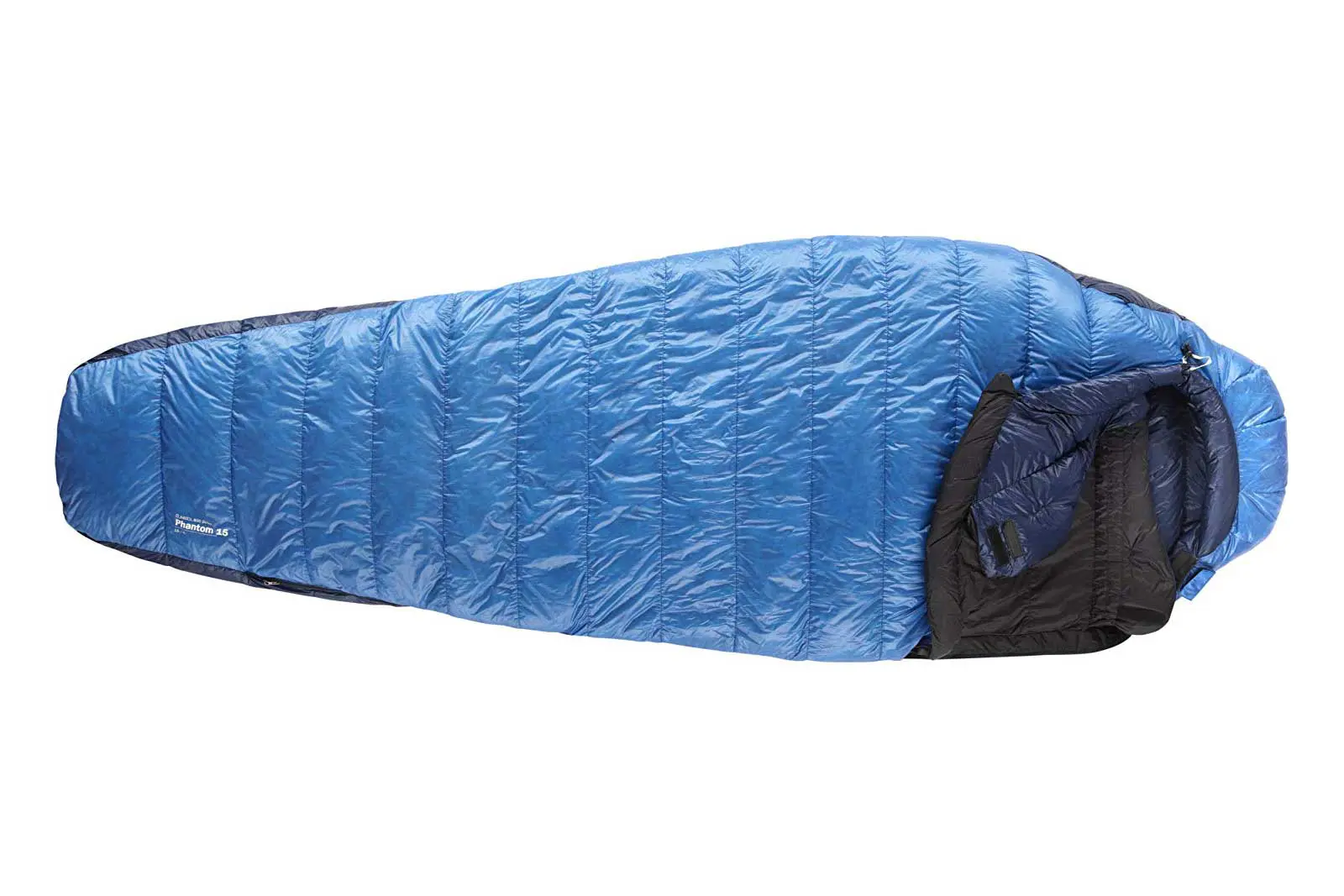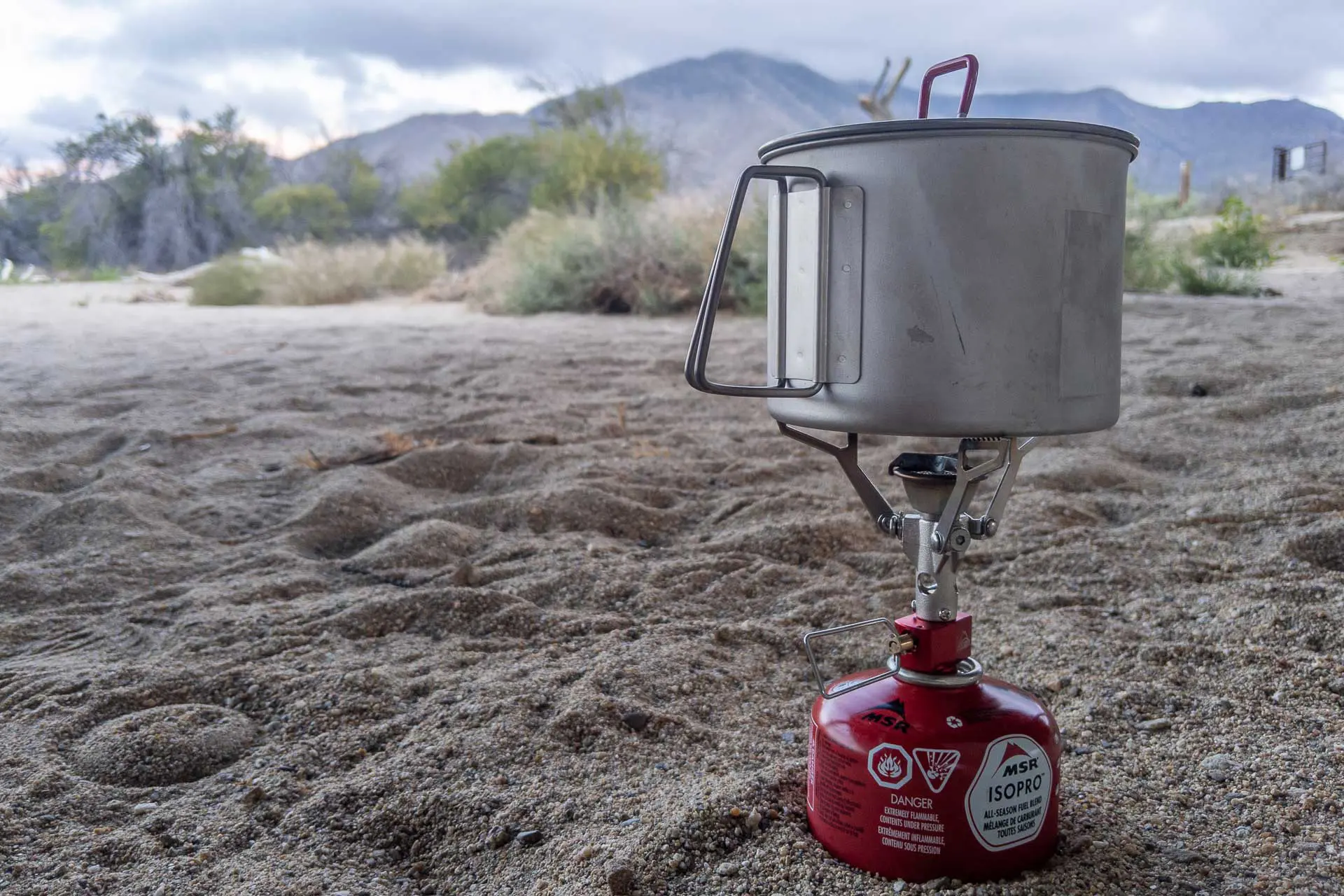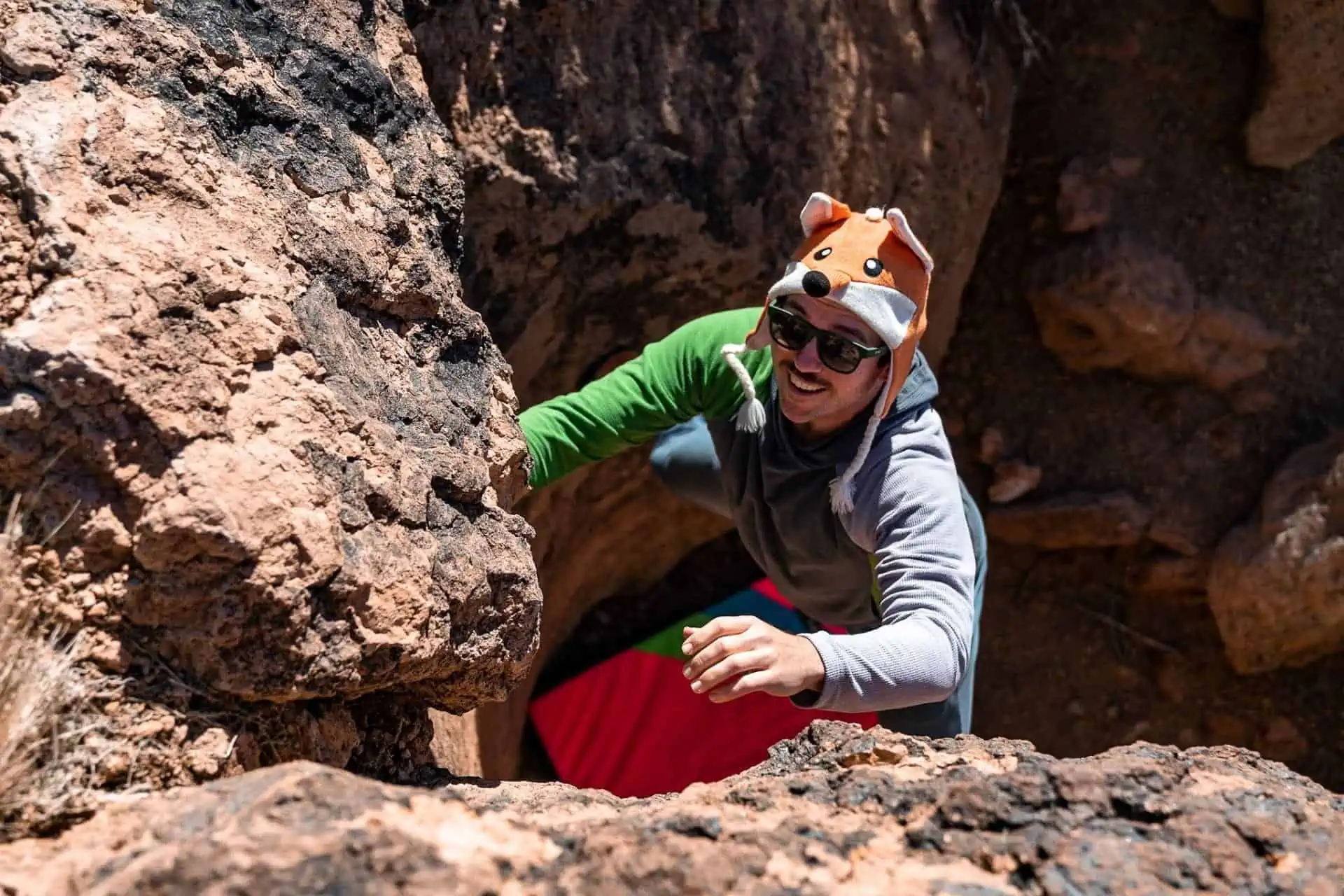Exped FlexMat Foam Sleeping Pad Review
The Exped FlexMat is a full-size, lightweight, closed-cell foam sleeping pad for outdoor adventures. With an R-value of 1.5, it’s a three-season sleeping pad but can be used in conjunction with an air mattress as part of a four-season setup.
It is available in three sizes, XS (51 x 20.5 in / 130 x 52 cm), M (72 x 20.5 in / 183 x 52 cm), and LW (77.6 x 25.6 in / 197 x 65 cm); all three are 0.7 in / 2 cm thick. There’s also another version of the FlexMat available, the FlexMat Plus, if you’re interested in something a little heavier, thicker, and with a higher R-value (2.2 vs. 1.5).
Here’s everything you need to know about the Exped FlexMat to decide whether to include it in your next outdoor adventure.
Pros and Cons

+ One of the lightest full-length sleeping pads
+ Packs down smaller than comparable pads
+ Slightly wider than the average “regular” sized foam sleeping pad
+ Less expensive than comparable pads
– Slightly lower R-value than comparable foam pads
– On the thinner side
– Not as comfortable for side sleepers
– Flattens with repeated use
The Specs
The following information reflects the Exped FlexMat in a size medium. There is also a long/wide version available. If you would like to see specifics on the xs or long/wide version, you can find them here.
- Weight: 12.3 oz / 350 g
- Dimensions (in): 72 x 20.5 x 0.7
- Dimensions (cm): 183 x 52 x 2
- Packed Dimensions (in): 5 x 20.5 x 6
- Packed Dimensions (cm): 13 x 52 x 15
- Thickness: 0.7 in / 2 cm
- Materials: Closed-cell IXPE foam, DWR free
- Shape: Rectangular
- R-Value: 1.5
- Sizes: XS, M, LW
- Color: Green
- MSRP: $34.95
Photo Gallery
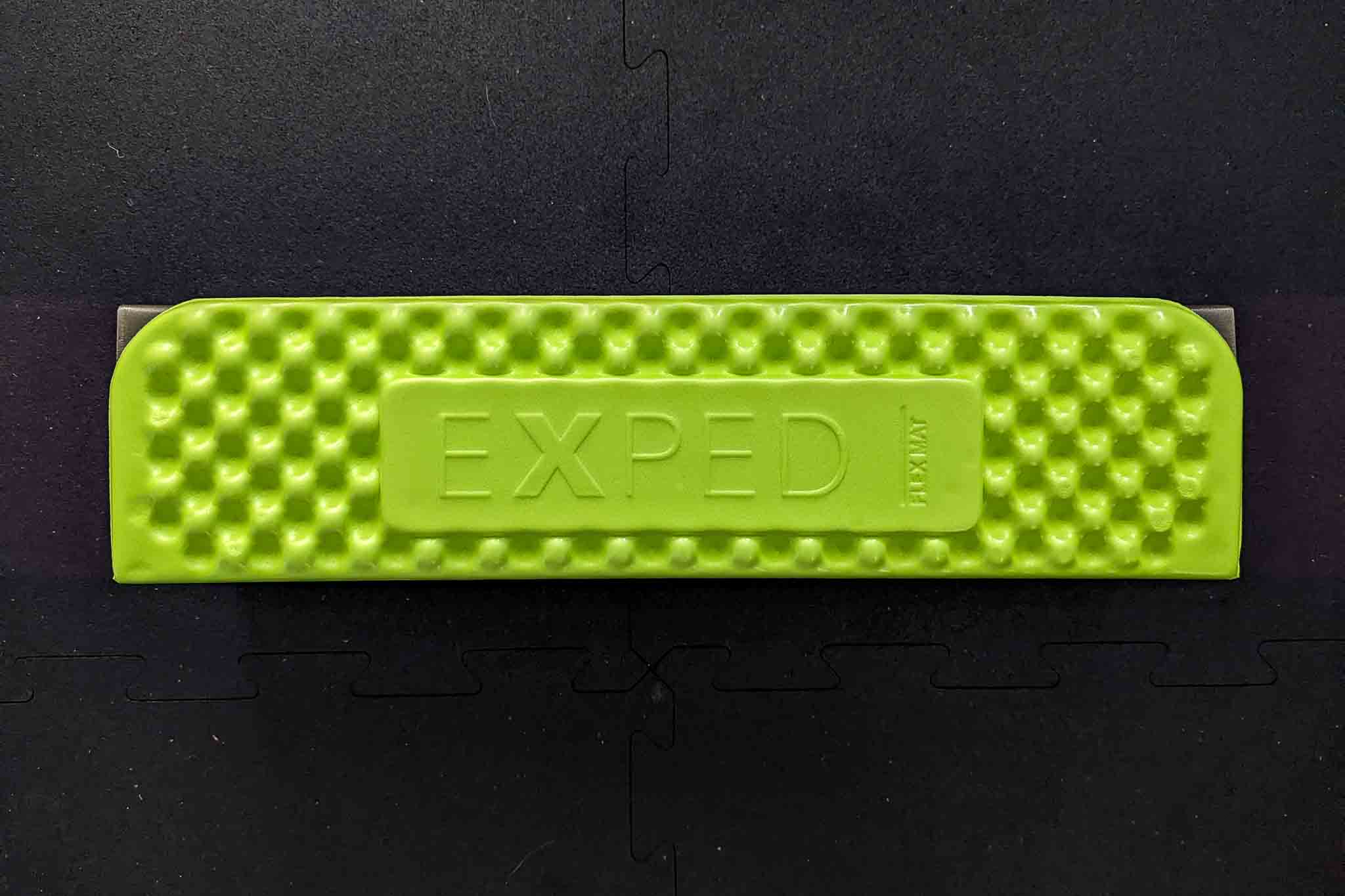
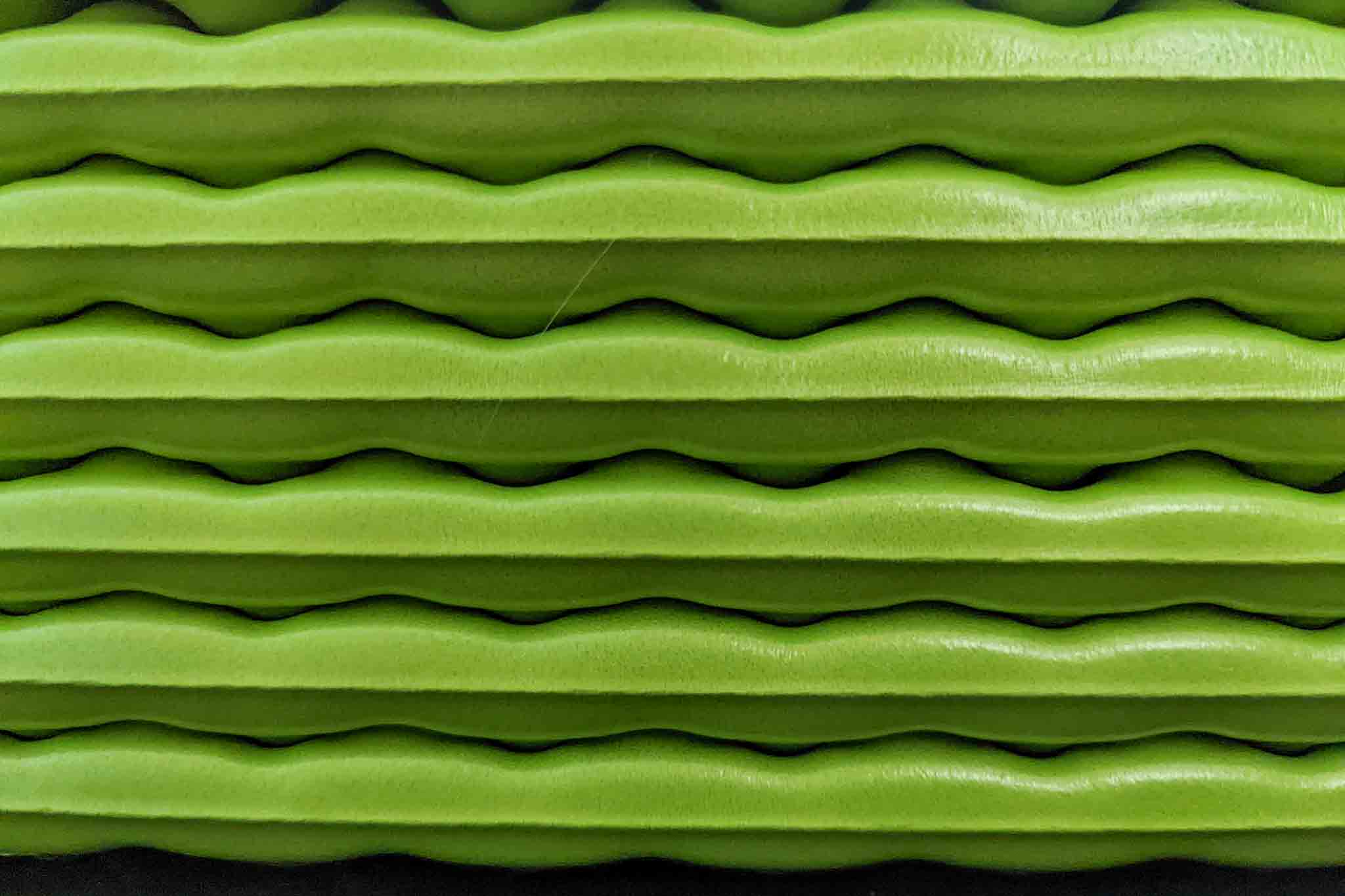

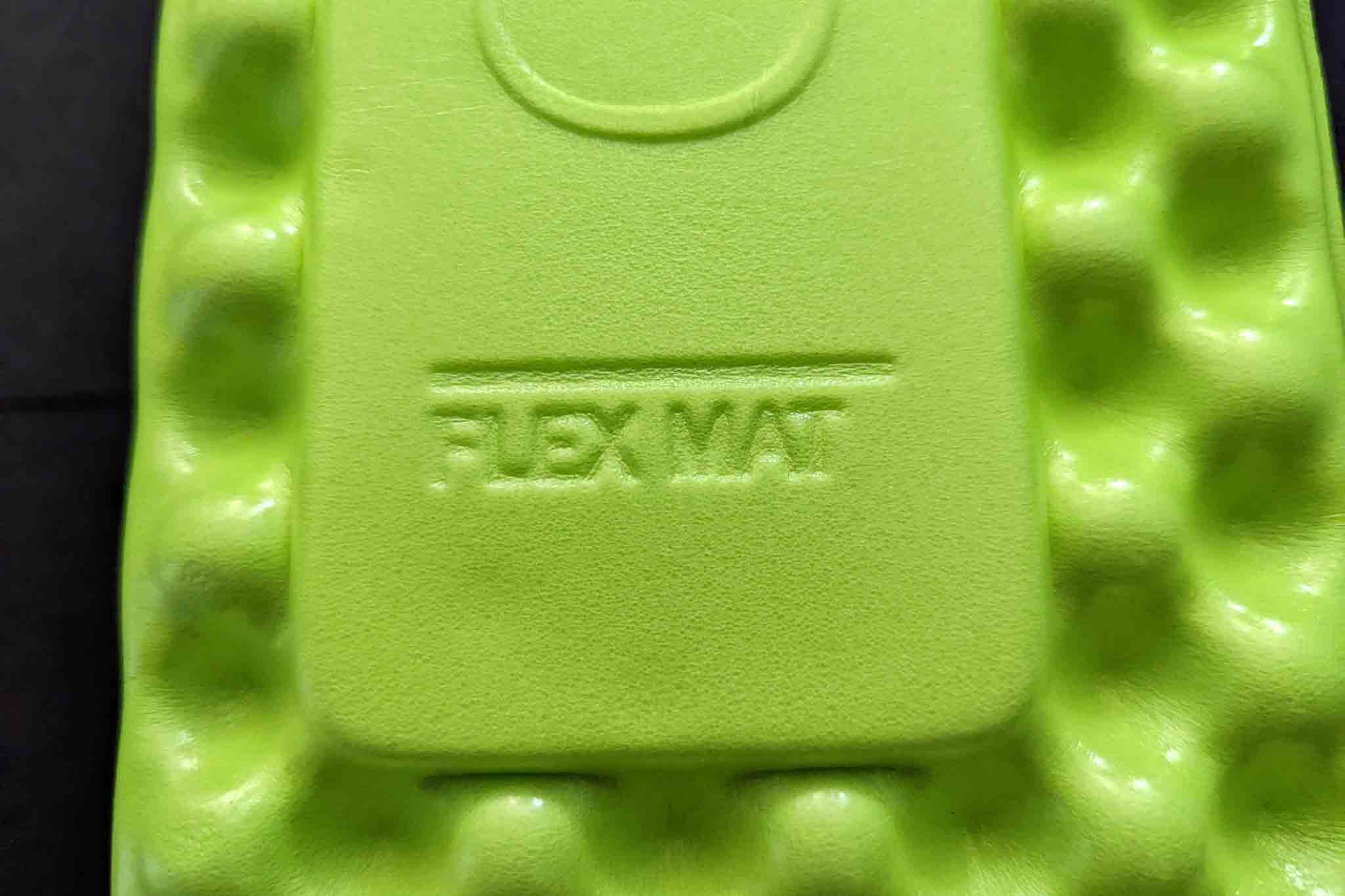
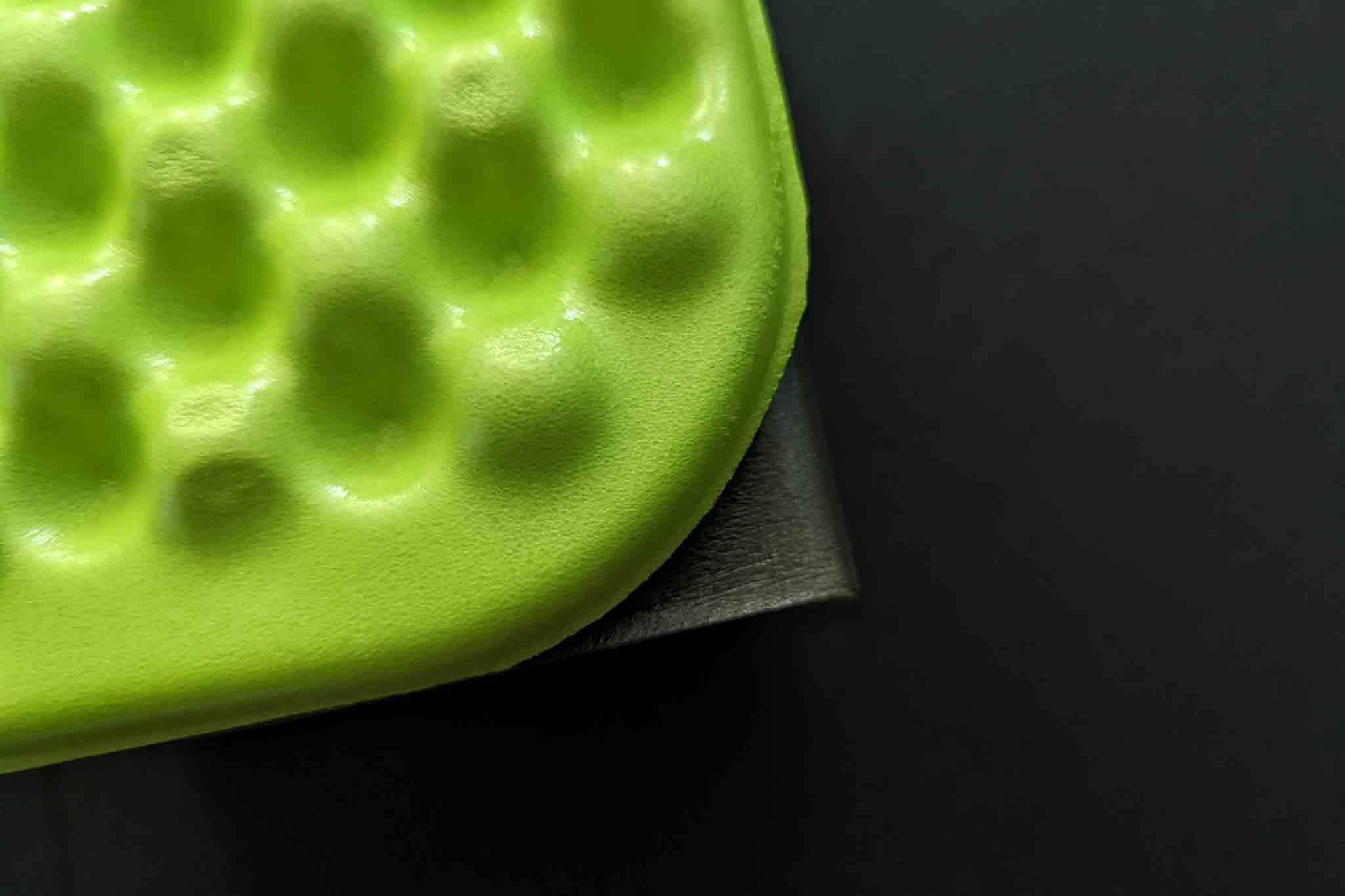
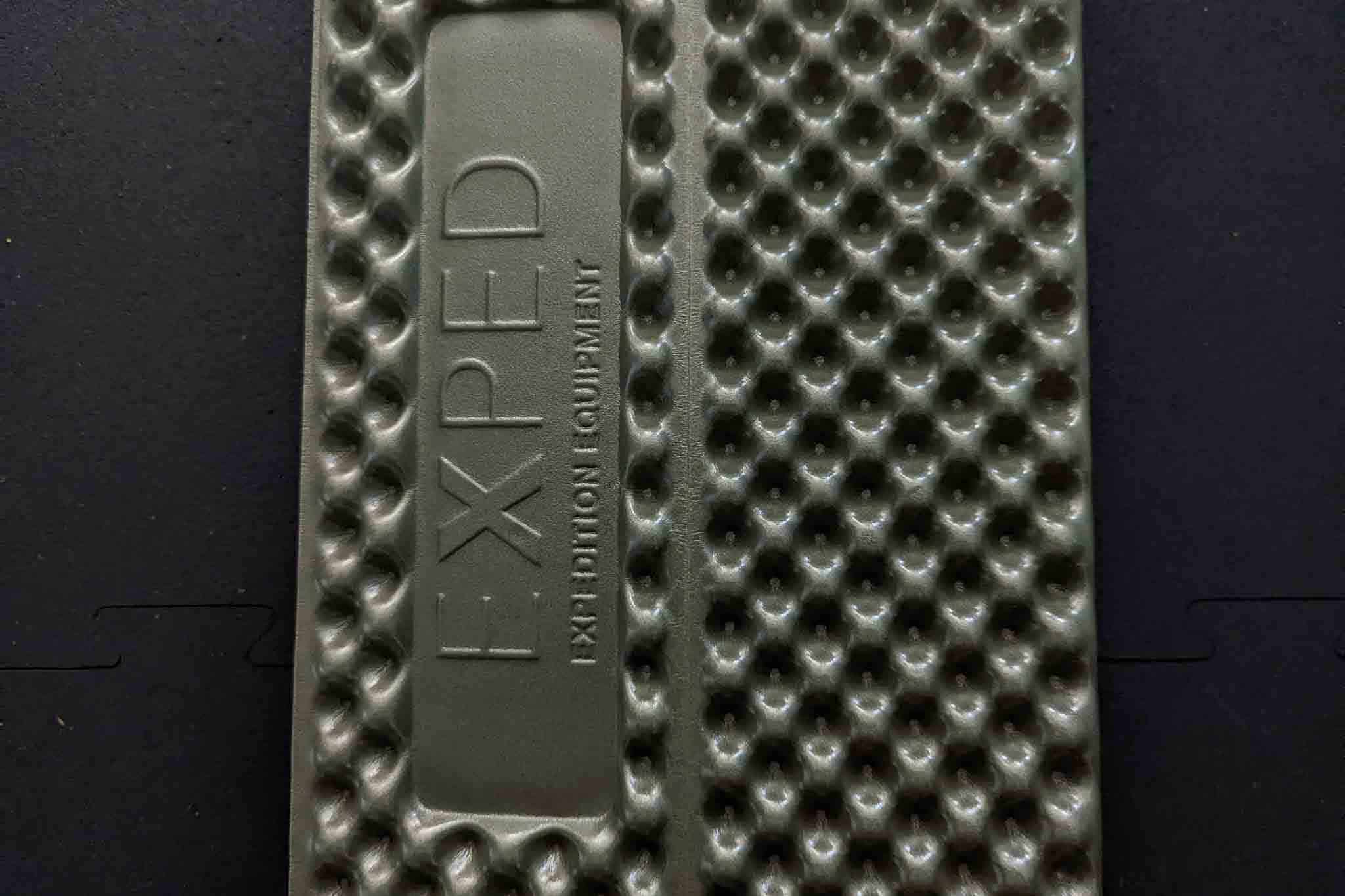
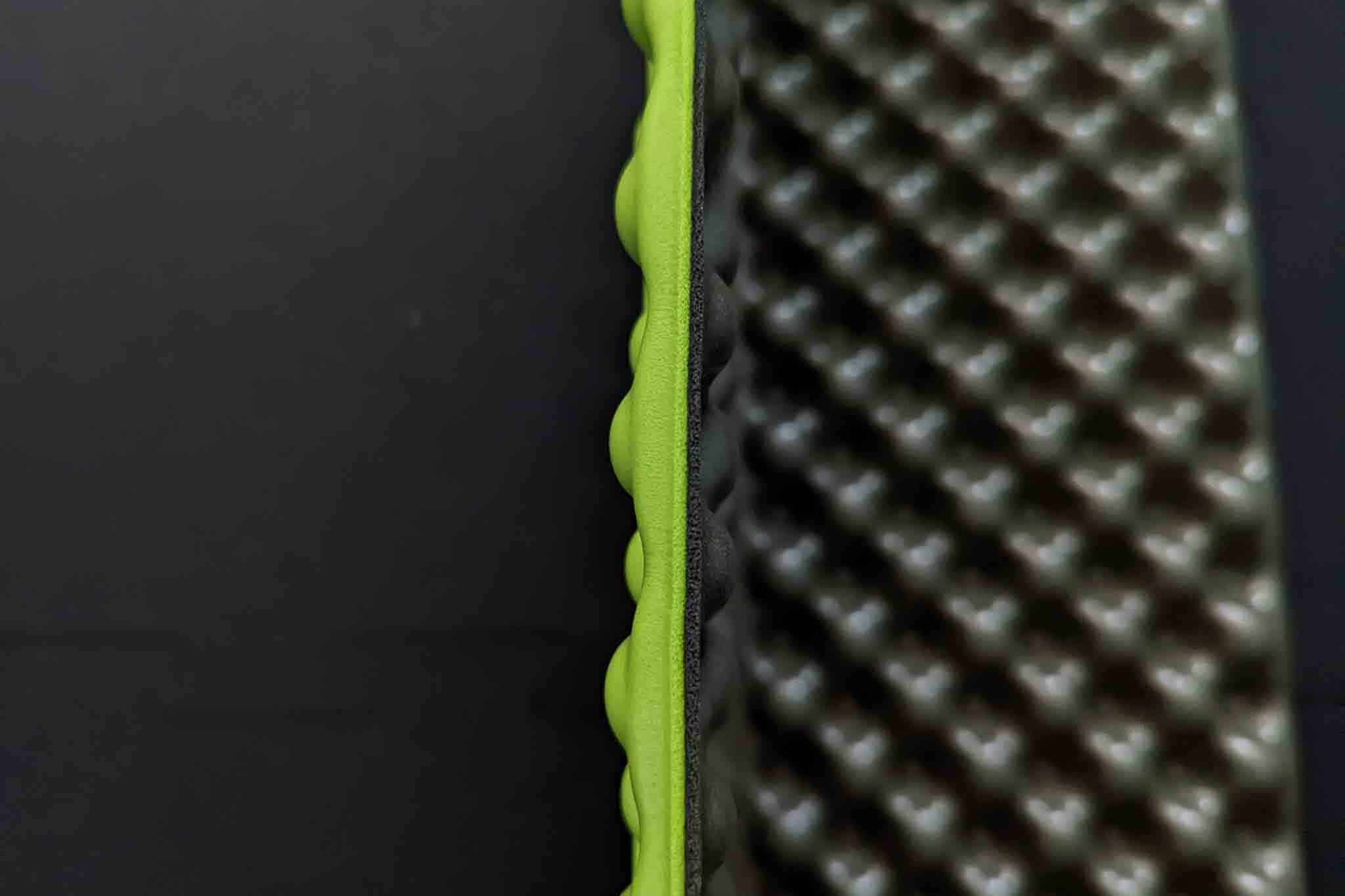
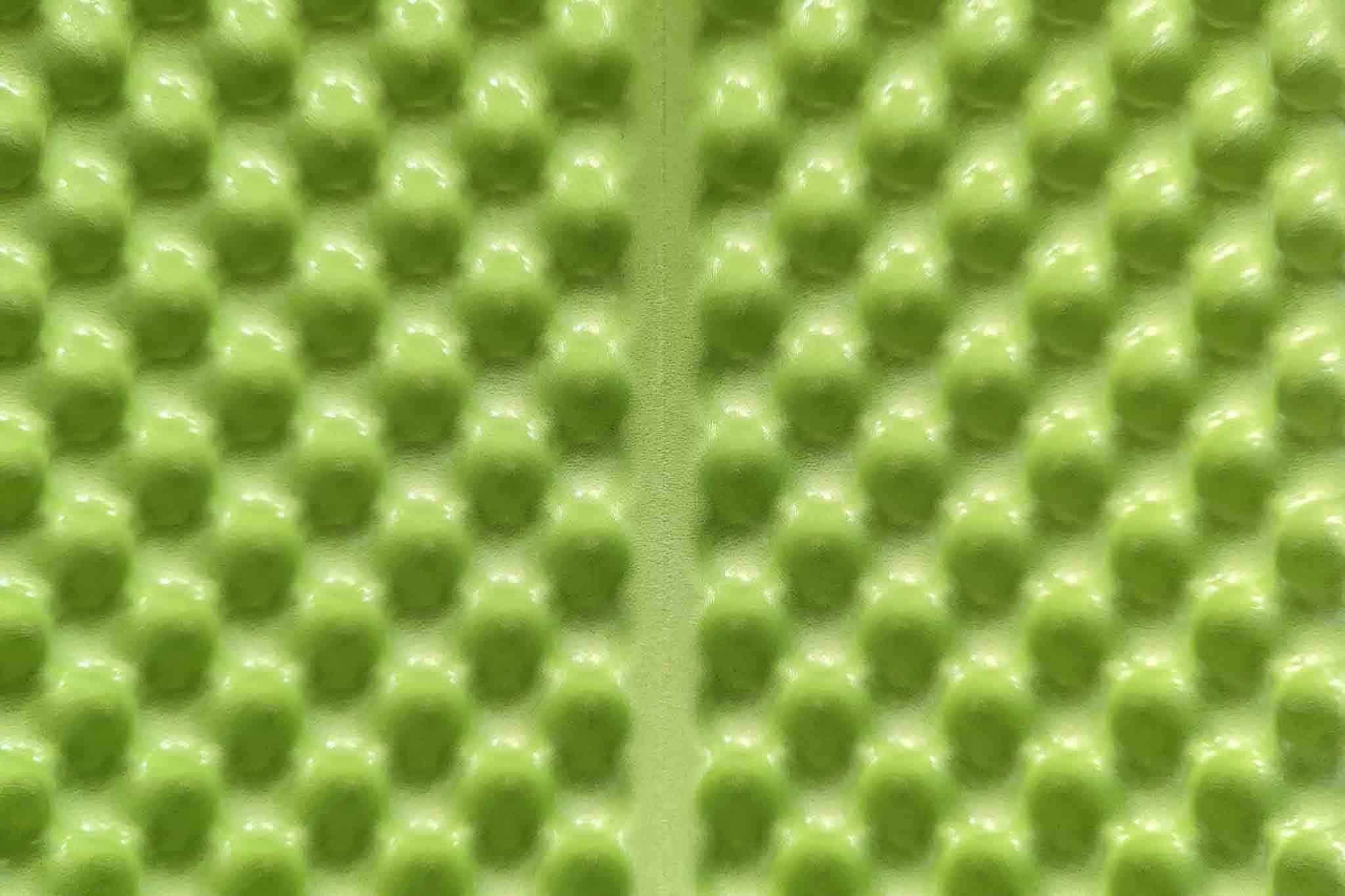
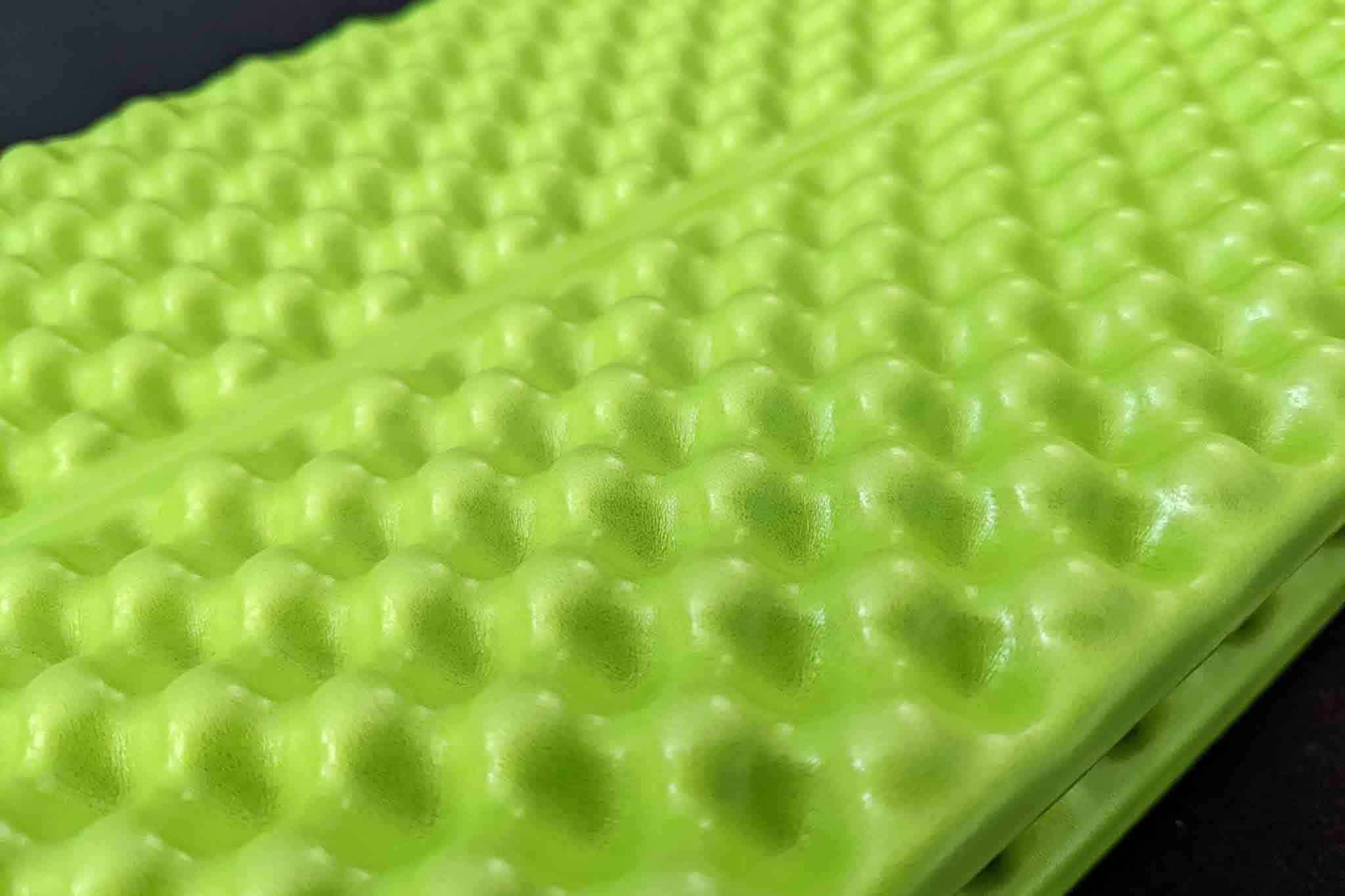
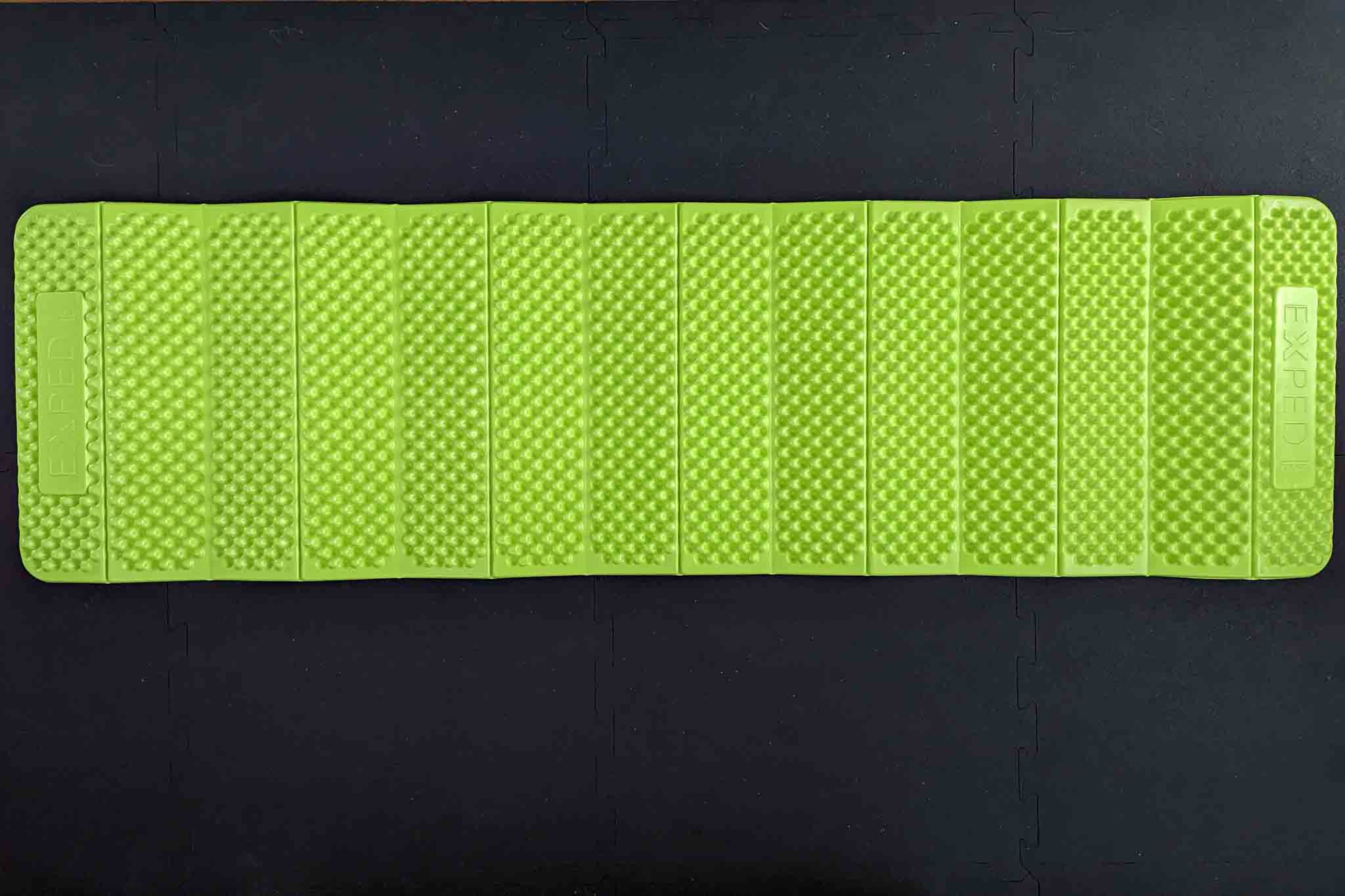
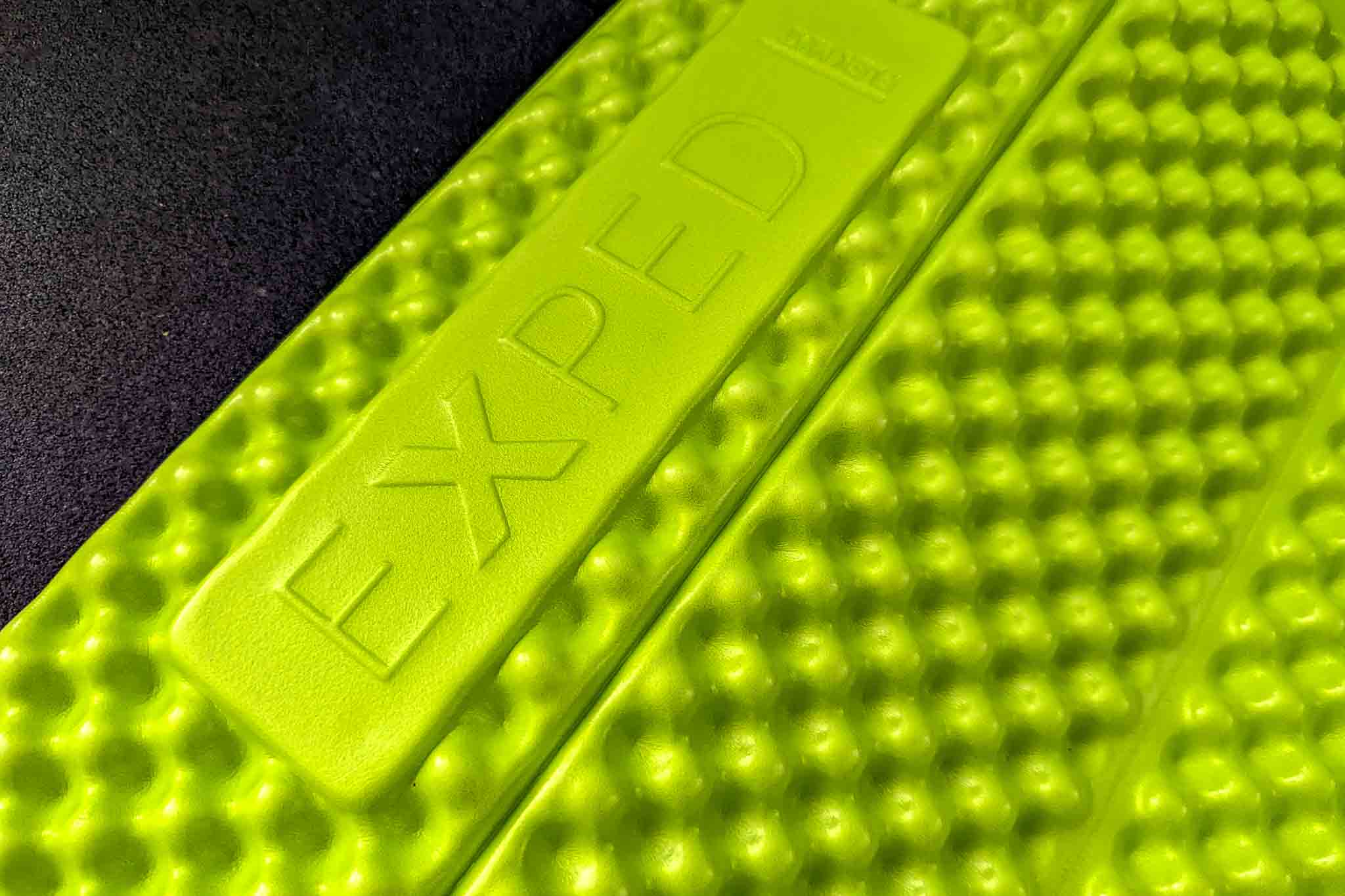
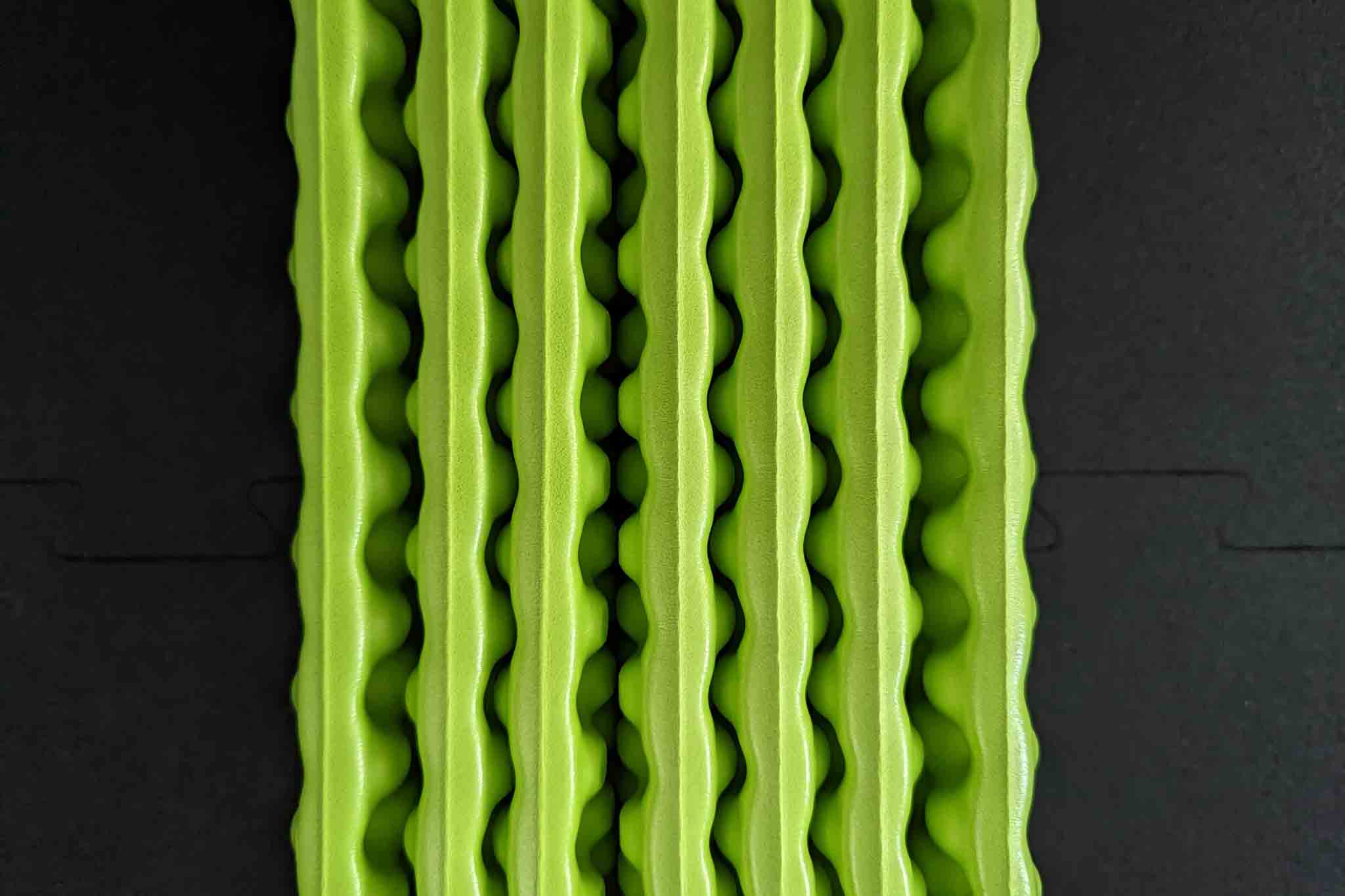
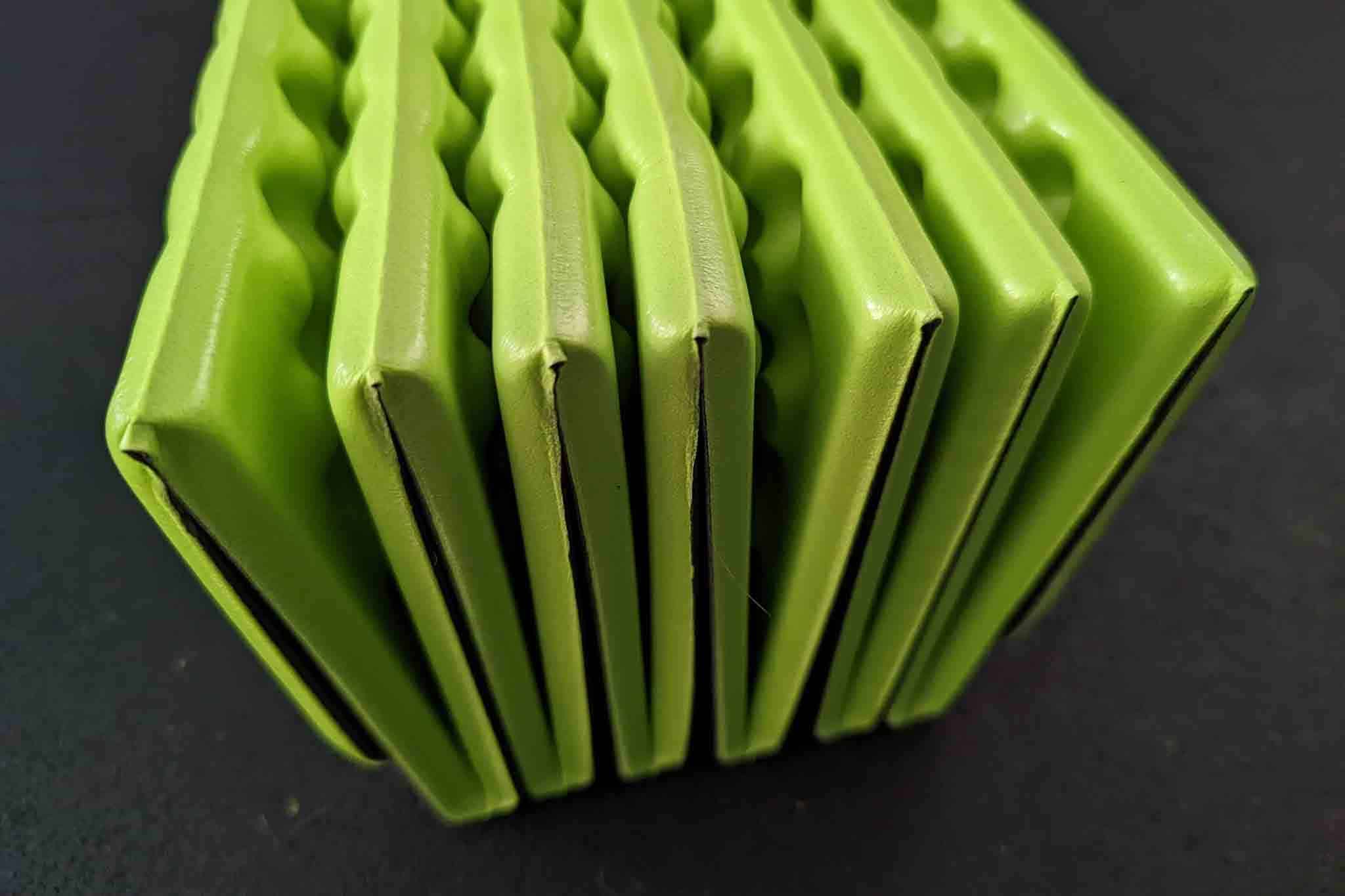
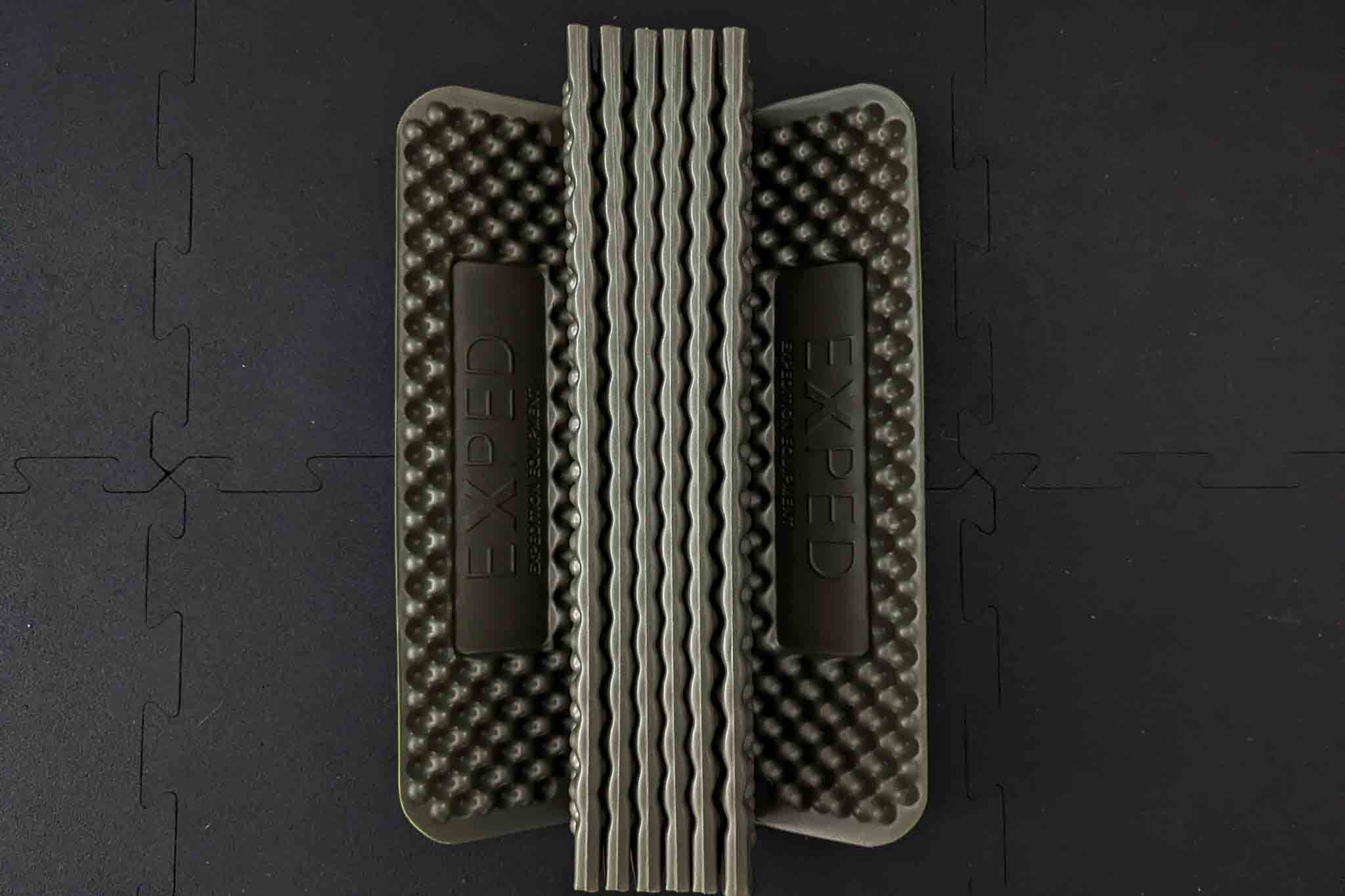
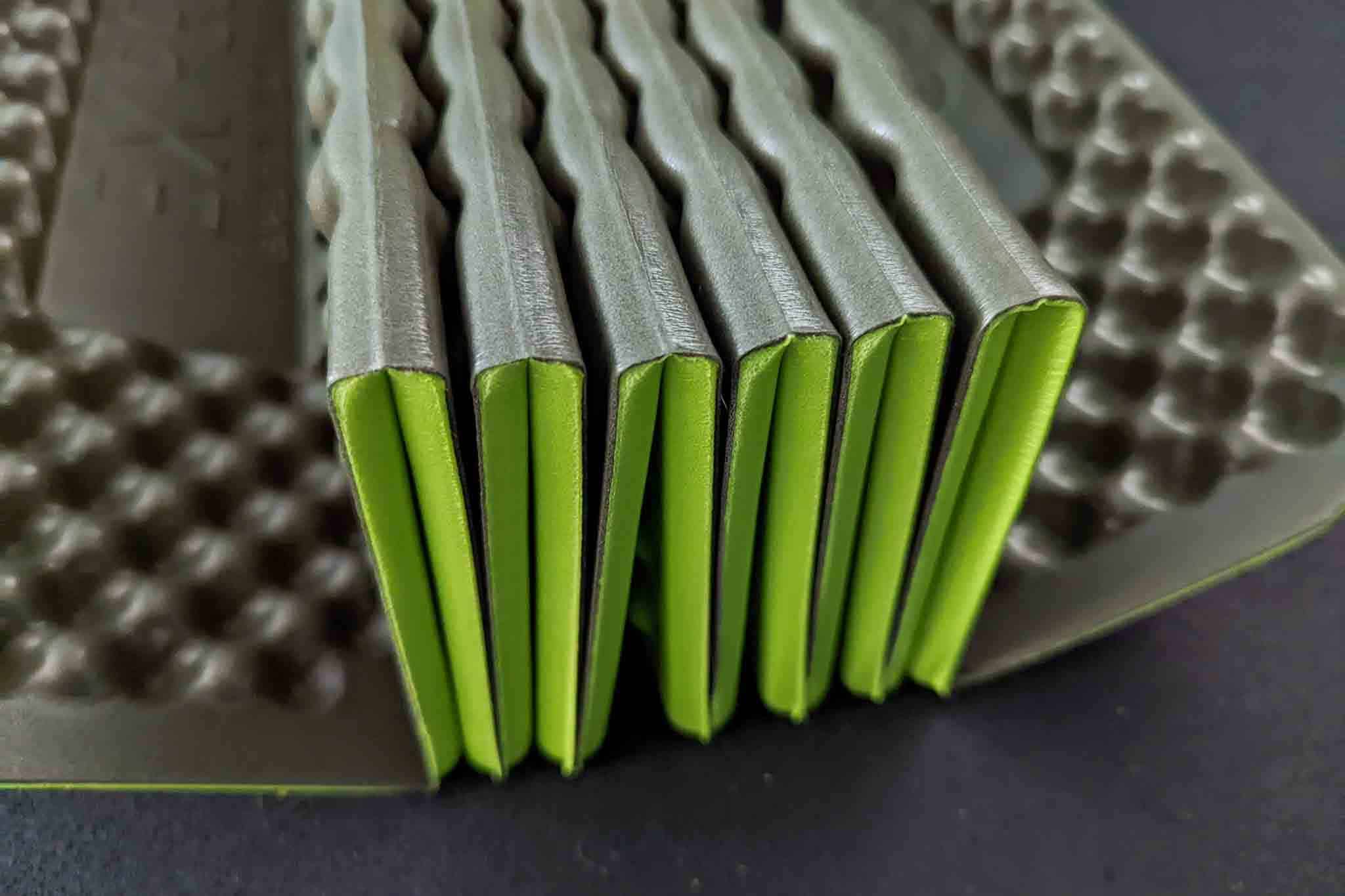




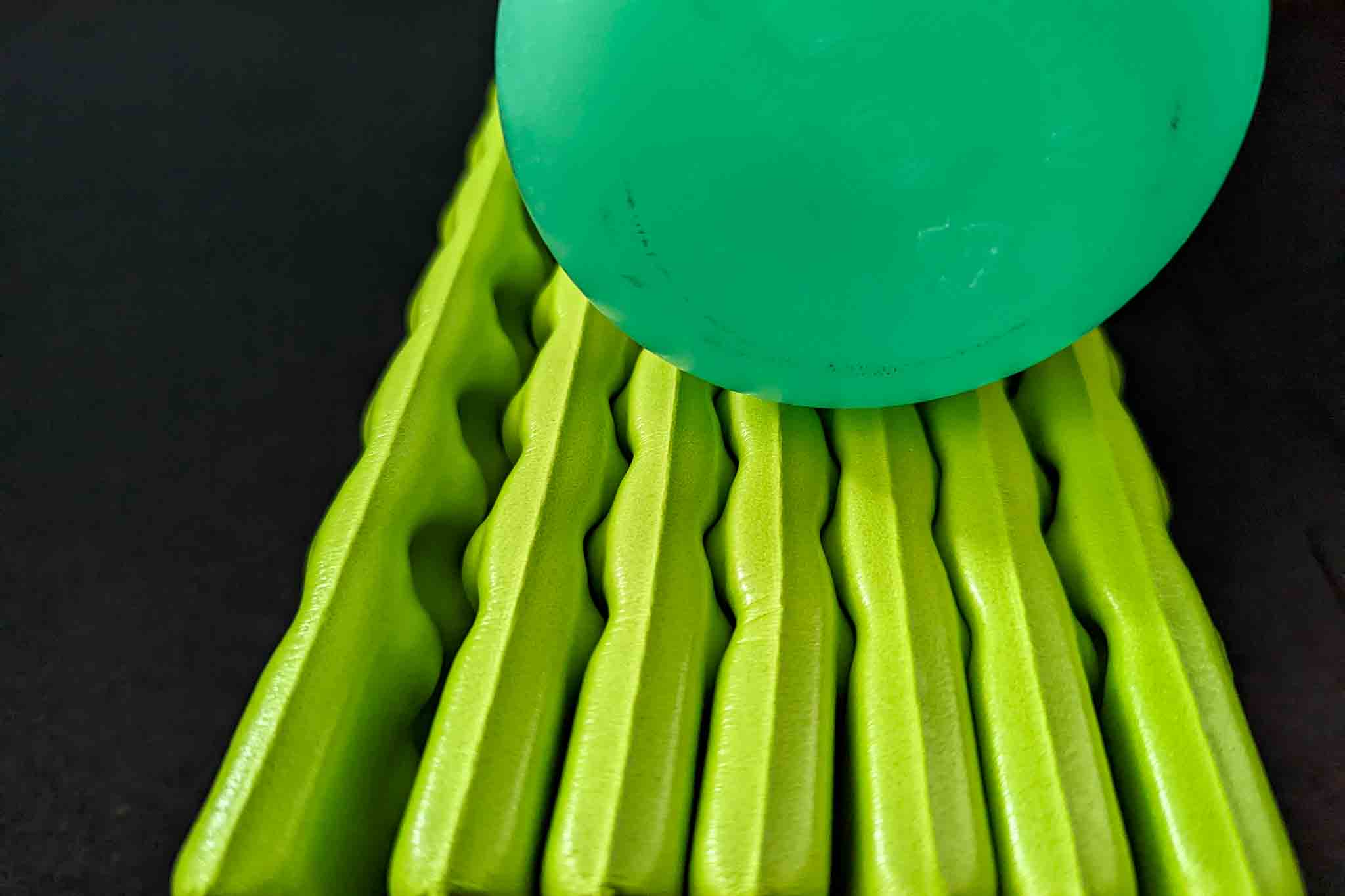

The Good
The Weight
The Exped FlexMat is arguably the lightest full-sized foam sleeping pad available. There are a couple of lighter options, like the Gossamer Gear Thinlite Foam Pad, but these are so thin (the Gossamer pad is just 0.125 in / 0.32 cm thick) that it could be argued they don’t belong in the same category of pads. A thinner pad also comes with a lower R-value, but if you’re using the FlexMat in three-season conditions (and avoiding snow), then it shouldn’t be an issue.
The Compactness
Along with being one of the lightest foam pads available, the Exped FlexMat is one of the most compact full-sized foam pads available. It folds to 5 x 20.5 x 6 in / 13 x 52 x 15 cm and can be easily strapped to the top, bottom, or side of a backpack. You wouldn’t want to put it inside your pack, but if you were using a frameless backpack and didn’t have a ton of gear, I suppose you could use it folded open, inside, against your back to provide structure and support.
The Price
In addition to being one of the lightest and most compact, full-sized sleeping pads out there, the FlexMat is also one of the most affordable, at just $35. There are a few other options in the sub-$40 range, but some foam sleeping pads cost upwards of $60 before tax—nearly twice as much as the FlexMat.
The Okay
The Comfort
One drawback of how thin (and therefore light) the Exped FlexMat you may find is the level of comfort the mat provides. If you have a particularly rough surface you’re sleeping on, you may want to spend some extra time clearing items from your campsite before laying down, as you will feel what’s below you to an extent with this pad. Side sleepers, who generally have a harder time with foam mats, may find this pad too thin if they are sensitive sleepers.
The Durability
Like most foam pads, the Exped FlexMat will flatten with repeated use. It’s durable from a “this pad will not stop or be easily ripped” perspective (although it can rip – pay attention if it’s attached to the outside of your pack and you’re bushwhacking), but it’s not quite as durable from a “this pad is just 0.7 in / 2 cm thick” perspective. If you’re using this pad to protect or insulate an air pad on top of it, you should be checking to make sure nothing ends up poking up through the FlexMat after repeated use.
The Bad
The Size
This is not unique to the Exped FlexMat, but it is a criticism of foam pads in general; the FlexMat is bulky – there is no way around it. Yes, it means you have an easily deployable mattress that won’t get a hole in it and become useless (like an air pad), but it also means you need to cope with a large piece of gear that will not fit inside your backpack. It’s not the biggest inconvenience, but if fast and light is the game’s name (which it very well may be with a pad like this one), you may need to weigh the benefit of the bulk. You can always cut some sections off or get the XS version.
The R-Value
The Exped FlexMat is a three-season pad – even just a summer pad – with an R-value of 1.5. This, like the comfort issue noted above, results from the pad being as thin and lightweight as it is. Depending on where you’ll be using this pad, that R-value may be more than enough, but it’s something to consider when considering the available options.
Who is it for?
Anyone is a candidate for the Exped FlexMat. It doesn’t matter if you’re a beginner backpacker who doesn’t want to spend much money on an inflatable pad or an experienced backpacker who wants one of the lightest foam pads. The limiting factors for who will benefit most from the FlexMat are comfort and R-value. Back sleepers will likely find this pad a better fit than side sleepers, and you do not want to use it in colder climates unless you’re using it to insulate an inflatable pad.
Popular Alternatives
| SLEEPING PAD | PRICE | WEIGHT | R-VALUE | THICKNESS | LENGTH/WIDTH | PACKED SIZE |
|---|---|---|---|---|---|---|
| Exped FlexMat | $35 | 12.3 oz / 349 g | 1.5 | 0.7 in / 1.8 cm | 72 x 20.5 in 183 x 52 cm | 20 x 5 x 4 in 51 x 13 x 10.75 cm |
| Exped FlexMat Plus | $60 | 17.6 oz / 499 g | 2.2 | 1.5 in / 3.8 cm | 72 x 20.5 in 183 x 52 cm | 20.5 x 7 x 6 in 52 x 18 x 15 cm |
| Gossamer Gear Thinlite Foam Pad | $21 | 3 oz / 85 g | 0.5 | 0.125 in / 0.32 cm | 59 x 19 in 150 x 48 cm | N/A |
| NEMO Switchback | $55 | 14.5 oz / 415 g | 2 | 0.9 in / 2.3 cm | 72 x 20 in 183 x 51 cm | 20 x 5 x 5.5 in 51 x 13 x 14 cm |
| Therm-a-Rest Original Z Lite | $45 | 14 oz / 397 g | 1.7 | 0.75 in / 1.9 cm | 72 x 20 in 183 x 51 cm | 20 x 5 x 5.5 in 51 x 13 x 14 cm |
| Therm-a-Rest RidgeRest Classic | $30 | 14 oz / 397 g | 2 | 0.625 in / 1.5 cm | 72 x 20 in 183 x 51 cm | 20 x 8 in 51 x 20 cm |
| Therm-a-Rest RidgeRest SOLite | $40 | 14 oz / 397 g | 2.1 | 0.625 in / 1.5 cm | 72 x 20 in 183 x 51 cm | 20 x 8 in 51 x 20 cm |
| Therm-a-Rest Z Lite SOL | $55 | 14 oz / 397 g | 2 | 0.75 in / 1.9 cm | 72 x 20 in 183 x 51 cm | 20 x 5 x 5.5 in 51 x 13 x 14 cm |
| Montbell Foam Pad 180 | $59 | 13.9 oz / 395 g | N/A | 0.6 in / 1.6 cm | 71.3 x 20.1 in 181 x 51 cm | 20.1 x 5.9 x 4.3 in 51 x 15 x 11 cm |
| Decathlon Trek 100 | $35 | 17.6 oz / 499 g | 2.2 | 0.8 in / 2 cm | 76.8 x 21.7 in 195 x 55 cm | 21.7 x 5.9 x 5.5 in 55 x 15 x 14 cm |
| Decathlon Forclaz Trek 100 | $30 | 13.1 oz / 371 g | 2.5 | 0.8 in / 2 cm | 70.9 x 21.7 in 180 x 55 cm | 21.7 x 5.9 x 5.5 in 55 x 15 x 14 cm |
Wrap Up
The Exped FlexMat is interesting as it may appeal equally to experienced and beginner backpackers. It’s a no-frills, lightweight, easy-to-deploy sleeping pad that can be used alone in warmer climates or in conjunction with an inflatable pad as a four-season solution.
Despite it being thin and its R-value being on the lower side, this also means you get a lighter and slightly more compact full-sized sleeping pad. Whether the Exped FlexMat is for you depends on where your priorities lie.
Questions, comments, or personal experience with the Exped FlexMat? Leave a comment below or get in touch!
Affiliate Disclosure: This page may contain affiliate links, which means I may receive small commissions for purchases made via these links at no additional cost to you. This helps pay the bills and keep the site up and running. Thank you for your support!
